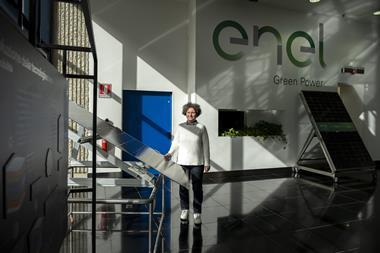Oxford researchers have proposed a novel ‘carbon removal budget’ that could better attract public and private investors into the carbon dioxide removal (CDR) market.
To limit global warming, the cumulative stock of carbon in the atmosphere needs to decrease. Traditional carbon removal methods like planting trees and restoring wetlands are part of this mix, as are more technological options which directly capture and store carbon.
The availability of carbon removal is, however, constrained, the paper highlights. For example, some carbon removal methods depend on significant energy consumption and require vast tracts of land.
As such, the paper makes the case that a carbon removal budget should sit alongside the Carbon Budget, which currently governs how much CO2 can be safely emitted globally, in order to value the removal capacity and allocate it in a fair and effective way.
Carbon dioxide removal is a necessary complement to emissions reductions to achieve a state of global net-zero emissions and stabilise future warming. However, despite its utility, CDR remains a finite resource which is poorly understood, the paper stated.
Dr Ben Caldecott, professor at the University of Oxford Smith School of Enterprise and the Environment and lead author of the paper said: “Carbon removal is the ‘net’ in ‘net zero’ and it is mission-critical for tackling climate change. However, carbon removal is not in infinite supply and is certainly not free to produce.”
“Embedding carbon removal budgets into decision-making is necessary for an effective response to climate change. It will become an essential part of net-zero transition plans, whether for countries, companies, or financial institutions,” he added.
Challenges and funding models
Technological readiness and economic feasibility remain the two main constraints on the carbon removal budget, according to the paper.
Research, development and innovation (RDI) and catalytic funding models currently remain the two primary levers to grow the supply of CDR in the near term, the paper stated.
However, improvements in these areas could help create a virtuous circle where an increase in buy-in from public and private investors improves investment certainty for CDR developers and reduces the marginal cost of CDR, Caldecott said.

The paper also said that carbon removal budgets can help to answer several urgent questions, such as how much carbon removal is needed and when? What methods for carbon removal should be prioritised? What impediments exist to the different types of removal supply and how can we overcome them?
“For example, it is not clear why a fossil fuel company should be using carbon removal today when there are ways to reduce its emissions today, especially when we need to preserve removals for future emissions that are extremely hard or impossible to eliminate,” Caldecott said.
Read the digital edition of IPE’s latest magazine






















No comments yet